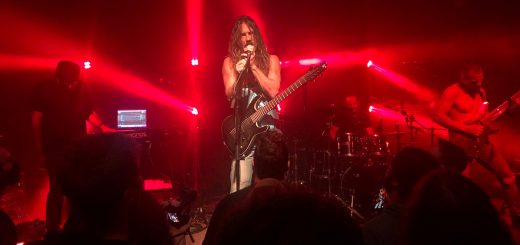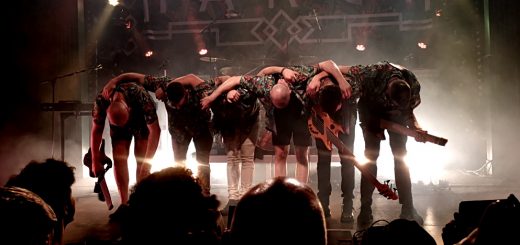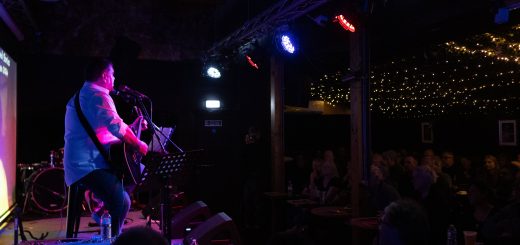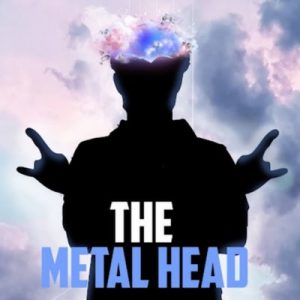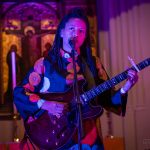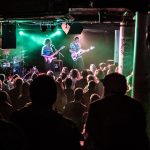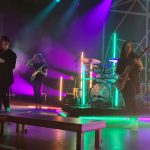Jean Michel Jarre at the Palace of Versailles
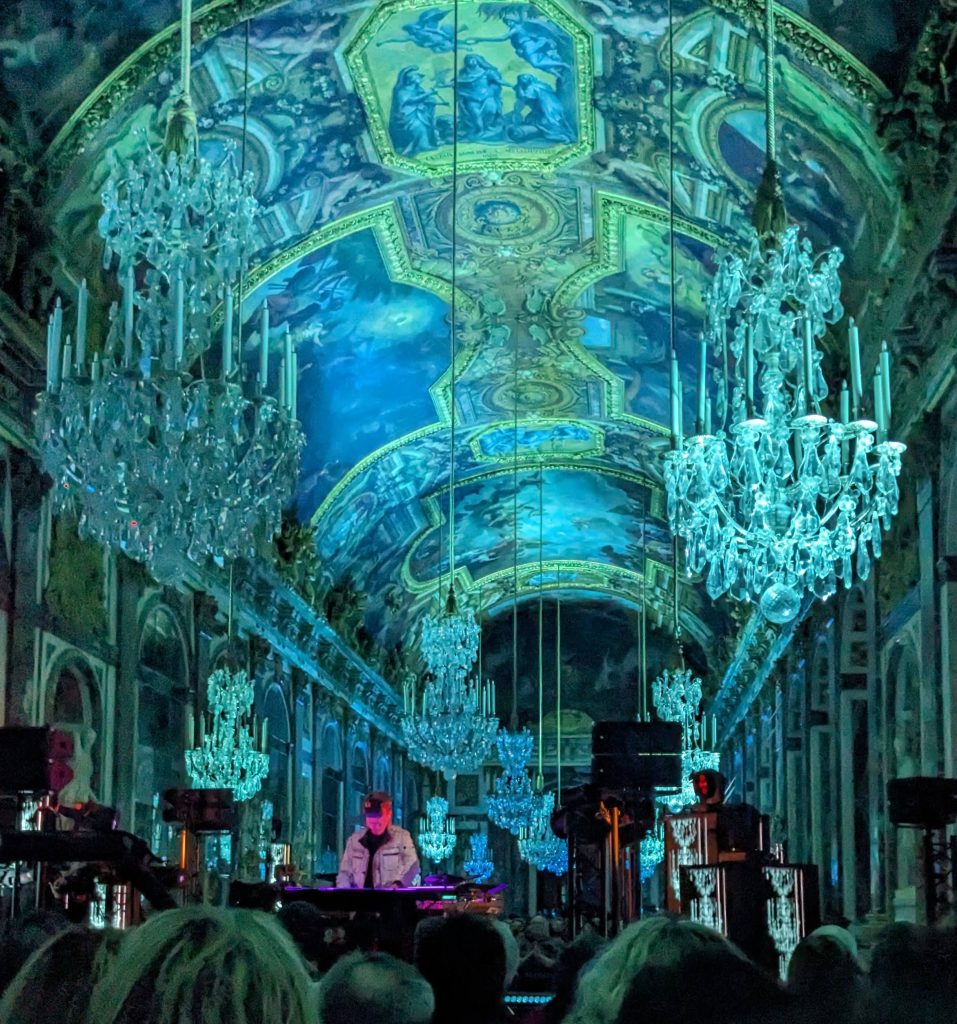
Credit: Charlotte Howard
When an artist arrives in their 8th decade, few audiences will begrudge them for relaxing a bit – resting on their laurels and just playing the hits. Not so for tonight’s artist Jean Michel Jarre, who even at 75 is still refusing to stop experimenting both musically and technologically.
Tonight’s concert is an unusual affair, even by Jarre‘s standards. Celebrating the 400th anniversary of the building of the first Palace of Versailles by Louis XIII, a mere 700 people are waiting on Christmas Day to be let into its legendary Hall of Mirrors to witness tonight’s concert in person. What makes this concert different is that we will also be joined by people from all over the world who will watch the concert live through VR headsets in a virtual rendering of the Hall with a virtual light show. This is not his first step into VR, as in 2020 he performed in the ruins of Notre Dame for an entirely virtual audience – but this is the first time that he’s attempted to perform for real and virtual audiences simultaneously. For everyone else experiencing things in 2 dimensions, it’s also all being recorded for French TV and YouTube.
The audience in the room is largely made up of Parisians old enough to have remembered Jarre‘s first albums – hardly surprising given the price of the tickets – but this reviewer found himself waiting with a couple who’d travelled from North Carolina for the show. Almost everyone has adhered to the red and black dress code – picked to match the colour scheme of the VR light show. As we are ushered into the hall, pausing to take photographs, I notice video screen columns having been placed strategically along the length of the hall showing hourglasses counting down to the start of the show.
Unfortunately, the show running late – the technical challenge of streaming video and VR data is more difficult than anticipated – and the crowd are restless. A TV producer reminds us all to look like we are enjoying ourselves and to stay seated throughout the show, but it is over half an hour before Jarre takes to the small stage in the centre of the hall.
The cameras are not yet rolling, and Jarre spends a few minutes giving us a brief introduction to the venue, focusing appropriately on Louis XIV’s patronage of art and technology, before introducing us to his first piece performed exclusively for the audience in the room. It’s a homage to Jean-Baptiste Lully, court composer to Louis XIV and his La Marche pour la cérémonie des Turcs (composed to welcome visitors to the palace), has had its baroque pomp reworked in tribute to the style of another pioneer of electronic music Wendy Carlos.
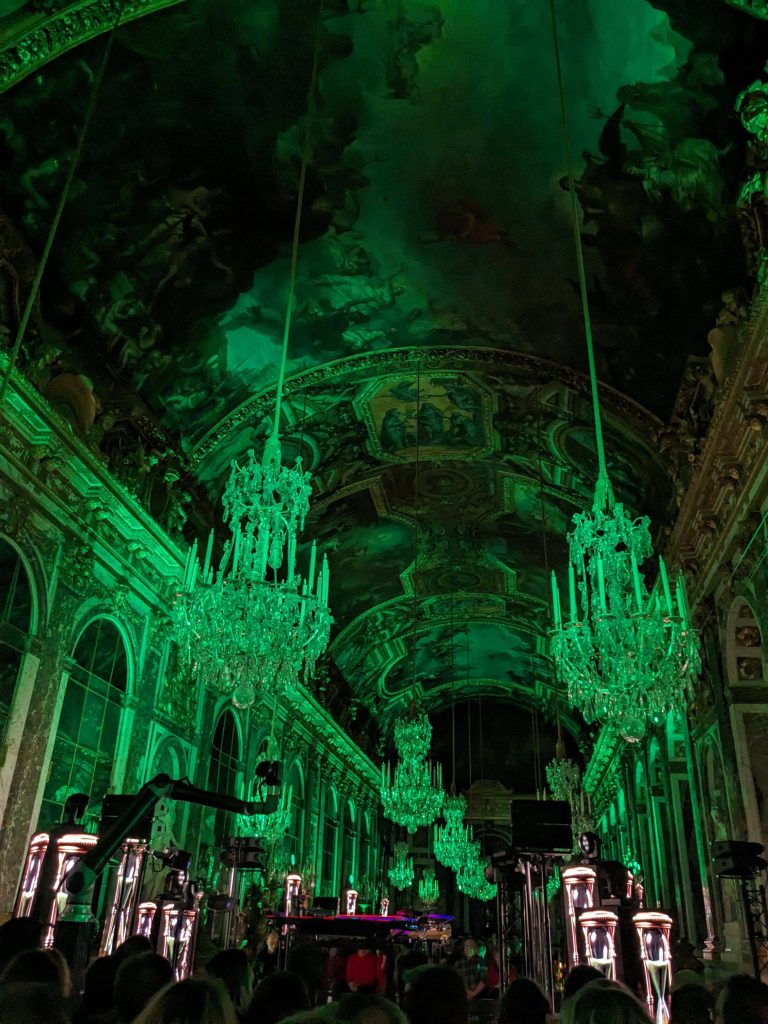
Credit: Charlotte Howard
Jarre then dons a headset which will allow those watching in VR to view the concert through his eyes, and the concert begins. He does indeed play the hits, kicking off with arguably his most famous track, Oxygene 4. It has been radically reworked and reharmonised from its bouncy proto-Europop into something much grander that wouldn’t feel out of place on the soundtrack to a Christopher Nolan film. Equinox 4 and Equinox 7 are similarly modernised with glitchy effects and harder beats that would have been difficult to create in the 70s, but still, you get the feeling that this is the track as the composer originally intended.
Kraftwerk may be been the first to introduce the world to the relentless pounding of sequencers and drum machines, but it was Jarre who got people dancing to them. Oxygene 2 however is kept close to its original incarnation – reminding me of the Oxygene anniversary concerts where it took 4 people and a copious number of vintage synths to reproduce the same piece.
On the subject of synths, Jarre‘s musical equipment for tonight is as unique as the event. Despite being surrounded on 3 sides by two tiers of equipment, there are only 3 things recognisable as keyboards and only one laptop screen. The rest of the tools with which he shapes tonight’s show are several large illuminated touchscreens. It’s hard to tell exactly what purposes they all perform, but I am presuming that they each shape different layers of sound in different ways as he draws his fingers across them. The overall effect is incredibly striking. Ever the showman, several drum pads are dotted all over his rig which he uses to trigger various drum and cymbal sounds throughout the show.
Coming to the midpoint of the show, we get a rare treat. Industrial Revolutions 2 seems an odd choice on paper given the surroundings, but its stately grandeur and message of progress couldn’t be more appropriate. The column screens highlight this by showing portraits from around the palace morphing with AI into robotic shapes.
From here on the show picks up the pace, drawing heavily from his more recent albums. Oxygene 19 has the audience spellbound, totally absorbed in its swirling soundscapes before the gut-punch distorted bass of Zero Gravity (his 2015 collaboration with Tangerine Dream) drops. The whole hall is on its feet as the light show kicks up a gear, the chandeliers each pulsing with colour and the wall of mirrors only adds to the sparkle. As we race through Falling Down to the finale Stardust (this time a collaboration with trance legend Armin van Buuren) there is a definite party atmosphere – the kind of party that Louis XIV could have only dreamed of!
At just under an hour, the concert feels decidedly short despite managing to cover 40 years of music. The restrictions of the venue and the TV and VR broadcasts are undoubtedly to blame, and while having the bonus of watching Lully performed live was nice (it’s only present as underscore to the opening montage on the recordings), one hour is not a lot of music. The special nature of the venue does make up for a lot though – seeing both the Hall of Mirrors in any setting other than “packed with tourists” is very rare, as is seeing Jarre in such an intimate setting – at 700 tickets, this is surely his smallest ever show?
The other aspect of the show to consider is the VR side of things. While this reviewer isn’t able to experience the show again in VR, the official YouTube stream includes a mix of footage from Versailles itself and its metaverse counterpart. The footage is spectacular and highlights one of the main advantages of VR concerts – incredible lighting and special effects that would be expensive (if not impossible) to achieve conventionally can be achieved with ease. Watching the footage closely however, reveals some clear timing/synchronisation issues but it’s unclear to what extent these were present in the live broadcast. What VR concerts also haven’t proved is the social aspect. True, you can watch everyone’s avatars dancing together, but a large part of this particular concert experience for me is the chats in the queue beforehand, the discussions of the show in the bar afterwards, and the general warm experience of community that comes with just being around lots of like-minded people. Whether VR can deliver *that* remains to be seen.

